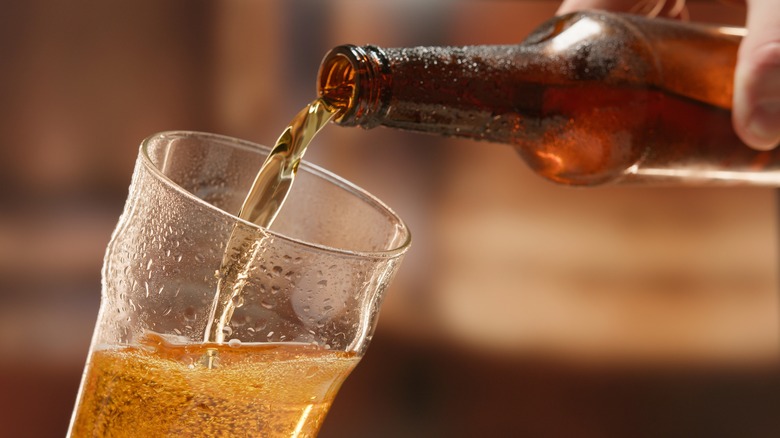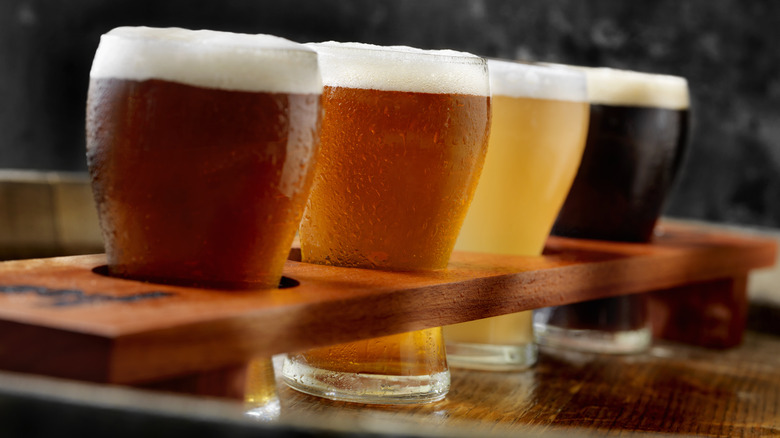What You Should Know About Beer Before You Pour It
It wasn't that long ago that the common wisdom around pouring beer was that you wanted as little foam as possible, but things are changing. To catch up on the latest beer pouring trends, Tasting Table reached out to Jeff Tyler, co-owner and head brewer for Spice Trade Brewery & Kitchen. "The two most important things to keep in mind when pouring beer from either a can or bottle is knowing what style of beer it is, and how it was carbonated," Tyler told us.
"With force carbonated beer (i.e. 95% of beer that you will buy in the liquor store) ... you typically want to pour the beer a bit more aggressively than you would think, directly into the bottom of the glass or with the glass at a slight angle," explains Tyler. "The goal here is to allow a good amount of the CO2 to 'break out' of solution (get foamy) while you are pouring."
Since most people tend to avoid the foam, we asked him why they should switch up their practice. "The thought behind this more aggressive pour is that you really don't want all of those bubbles staying in the beer because they'll end up in your stomach and you'll end up burping it all out. Less CO2 means you still get the aroma ... but it saves you from filling your whole stomach with beer foam." The same idea goes for draft beers, regardless of whether the beer is dark or light.
Specialty beers
What about the other 5% of beers? According to Jeff Tyler, you want to look for the words "naturally carbonated" or "bottle/can conditioned" on the container itself. "This means that the brewery added yeast and a little bit of sugar directly to the bottle or can right before sealing it," he explains." The yeast ferments the sugar to create carbonation directly inside the bottle. It's not a particularly common method, but you will find it with some Belgian and sour style beers.
This process leaves a layer of sediment at the bottom of the bottle or can. "When you pour it you want to pour gently and ideally all at once (not tilting the bottle down, then upright, then down again as this will mix up the yeast)," notes Tyler. "Leave the last few ounces of beer behind in the bottle and you should end up with a clear pour in your glass and any remaining yeast left behind in the bottle." It's a similar process for hefeweizens and hazy IPAs which also tend to have sediment.
The moral of the story is that you need to let the carbonation break out so you don't end up with a big gurgly mass in the pit of your stomach whenever you hit the bar. And if you're drinking specialty craft beer with sediment at the bottom, just leave the last bit unpoured so you don't end up guzzling the silty remains.

